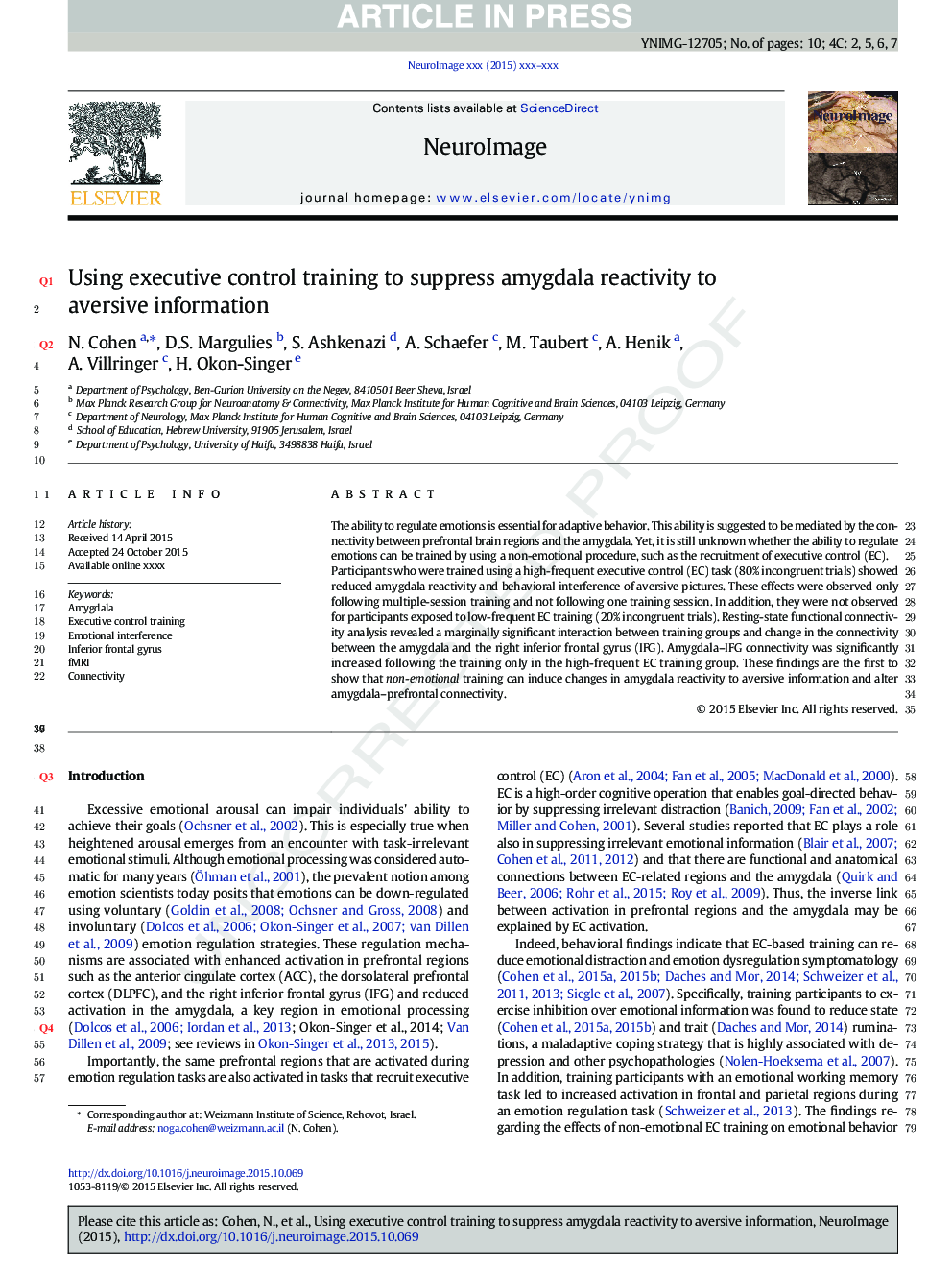| Article ID | Journal | Published Year | Pages | File Type |
|---|---|---|---|---|
| 6024221 | NeuroImage | 2016 | 10 Pages |
Abstract
Participants who were trained using a high-frequent executive control (EC) task (80% incongruent trials) showed reduced amygdala reactivity and behavioral interference of aversive pictures. These effects were observed only following multiple-session training and not following one training session. In addition, they were not observed for participants exposed to low-frequent EC training (20% incongruent trials). Resting-state functional connectivity analysis revealed a marginally significant interaction between training group and change in the connectivity between the amygdala and the right inferior frontal gyrus (IFG). Amygdala-IFG connectivity was significantly increased following the training only in the high-frequent EC training group. These findings are the first to show that non-emotional training can induce changes in amygdala reactivity to aversive information and alter amygdala-prefrontal connectivity.
Keywords
Related Topics
Life Sciences
Neuroscience
Cognitive Neuroscience
Authors
N. Cohen, D.S. Margulies, S. Ashkenazi, A. Schaefer, M. Taubert, A. Henik, A. Villringer, H. Okon-Singer,
